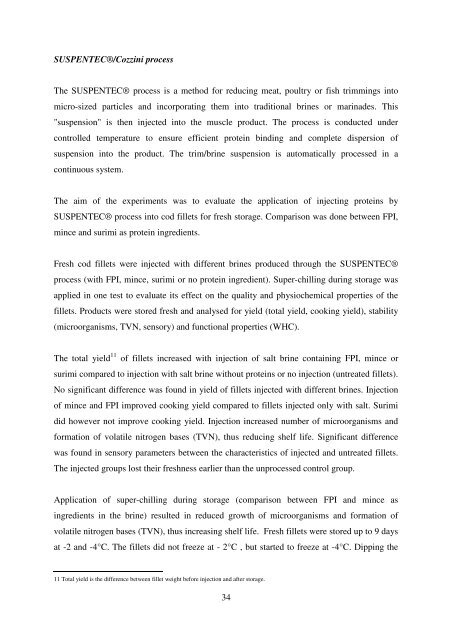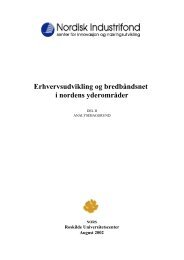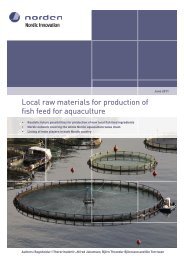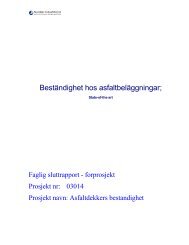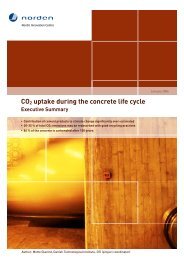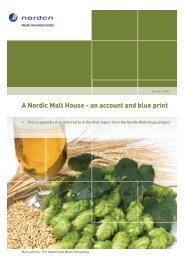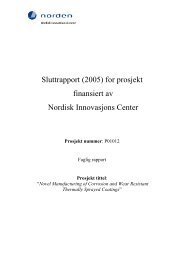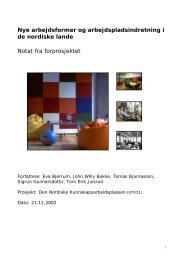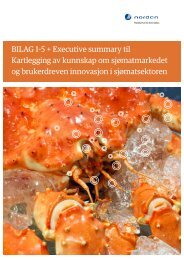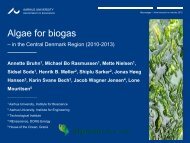Value added fish by-products - Nordic Innovation
Value added fish by-products - Nordic Innovation
Value added fish by-products - Nordic Innovation
You also want an ePaper? Increase the reach of your titles
YUMPU automatically turns print PDFs into web optimized ePapers that Google loves.
SUSPENTEC®/Cozzini process<br />
The SUSPENTEC® process is a method for reducing meat, poultry or <strong>fish</strong> trimmings into<br />
micro-sized particles and incorporating them into traditional brines or marinades. This<br />
"suspension" is then injected into the muscle product. The process is conducted under<br />
controlled temperature to ensure efficient protein binding and complete dispersion of<br />
suspension into the product. The trim/brine suspension is automatically processed in a<br />
continuous system.<br />
The aim of the experiments was to evaluate the application of injecting proteins <strong>by</strong><br />
SUSPENTEC® process into cod fillets for fresh storage. Comparison was done between FPI,<br />
mince and surimi as protein ingredients.<br />
Fresh cod fillets were injected with different brines produced through the SUSPENTEC®<br />
process (with FPI, mince, surimi or no protein ingredient). Super-chilling during storage was<br />
applied in one test to evaluate its effect on the quality and physiochemical properties of the<br />
fillets. Products were stored fresh and analysed for yield (total yield, cooking yield), stability<br />
(microorganisms, TVN, sensory) and functional properties (WHC).<br />
The total yield 11 of fillets increased with injection of salt brine containing FPI, mince or<br />
surimi compared to injection with salt brine without proteins or no injection (untreated fillets).<br />
No significant difference was found in yield of fillets injected with different brines. Injection<br />
of mince and FPI improved cooking yield compared to fillets injected only with salt. Surimi<br />
did however not improve cooking yield. Injection increased number of microorganisms and<br />
formation of volatile nitrogen bases (TVN), thus reducing shelf life. Significant difference<br />
was found in sensory parameters between the characteristics of injected and untreated fillets.<br />
The injected groups lost their freshness earlier than the unprocessed control group.<br />
Application of super-chilling during storage (comparison between FPI and mince as<br />
ingredients in the brine) resulted in reduced growth of microorganisms and formation of<br />
volatile nitrogen bases (TVN), thus increasing shelf life. Fresh fillets were stored up to 9 days<br />
at -2 and -4°C. The fillets did not freeze at - 2°C , but started to freeze at -4°C. Dipping the<br />
11 Total yield is the difference between fillet weight before injection and after storage.<br />
34


